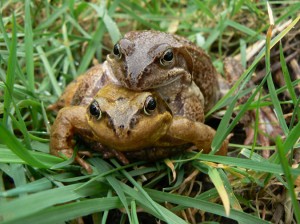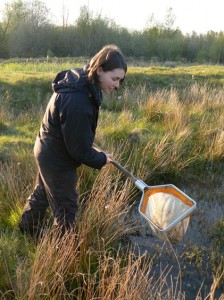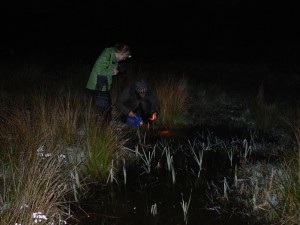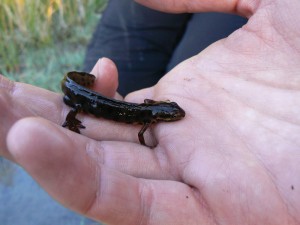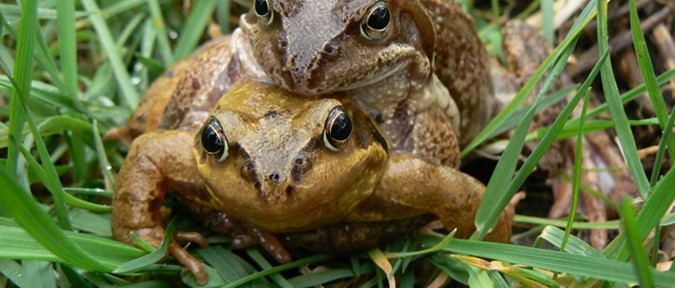
March, April and May are busy months for Froglife as they are the time of peak activity for frogs, toads and newts. All this activity is recorded by Froglife at their Living Waters Project sites in North Lanarkshire and Glasgow.
We began the survey season with daytime spawn surveys. This involved surveying every pond for frogspawn. When we found some we counted the separate clumps and measured the large ones. Each female frog mates with one male and lays eggs in a separate clump so it is possible to estimate the population size. It was exciting to find frogspawn in ponds that we had recently created.
Newt surveys take place during the evening. An egg search is completed whilst it is still daylight. When newts lay their eggs, they wrap each individual egg in a leaf. It is possible to find these eggs by looking for leaves that are folded over. Then we can determine if a newt is breeding in the pond.
We also did measurements of water quality, including Ph, conductivity, turbidity and temperature. Once it got dark we used torches to look for newts, frogs and toads in the water. Newts are most active at night and we identified adult male and female palmate and smooth newts and newt larvae. Male palmate newts can be told by the shape of their back feet, which are webbed. They also have an obvious tail filament. Male smooth newts have a wavy crest and their markings are more ’leopard-like’! Female ‘small’ newts are very similar but it is possible to tell them apart by the markings on their throats. Female palmate newts have no spots on their throat, which is pinkish, but female smooth newts can have spots on their throat.
The ponds are monitored every year so we have records of how the amphibians are faring in North Lanarkshire and Glasgow. The night-time surveys were great fun and I learnt a lot about scientific surveying for amphibians. It was interesting to see male and female palmate and smooth newts close up and very useful for developing my identification skills!

